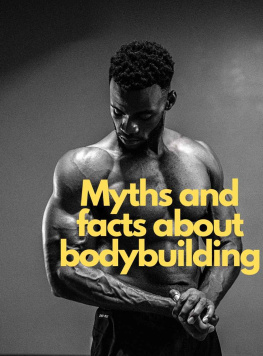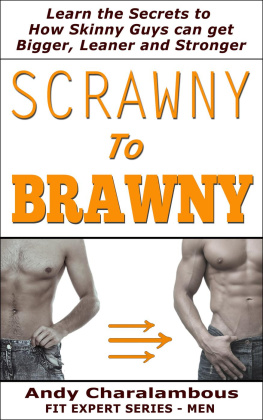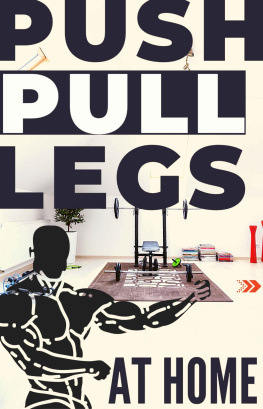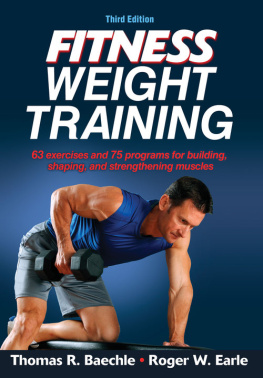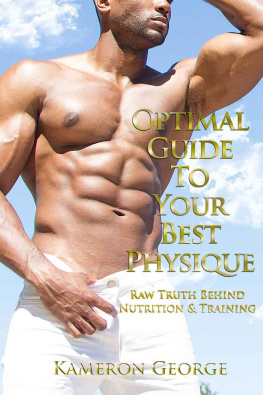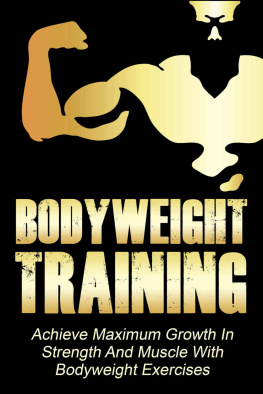Hrich - Myths and realities about musculation
Here you can read online Hrich - Myths and realities about musculation full text of the book (entire story) in english for free. Download pdf and epub, get meaning, cover and reviews about this ebook. year: 2020, genre: Science. Description of the work, (preface) as well as reviews are available. Best literature library LitArk.com created for fans of good reading and offers a wide selection of genres:
Romance novel
Science fiction
Adventure
Detective
Science
History
Home and family
Prose
Art
Politics
Computer
Non-fiction
Religion
Business
Children
Humor
Choose a favorite category and find really read worthwhile books. Enjoy immersion in the world of imagination, feel the emotions of the characters or learn something new for yourself, make an fascinating discovery.
Myths and realities about musculation: summary, description and annotation
We offer to read an annotation, description, summary or preface (depends on what the author of the book "Myths and realities about musculation" wrote himself). If you haven't found the necessary information about the book — write in the comments, we will try to find it.
Hrich: author's other books
Who wrote Myths and realities about musculation? Find out the surname, the name of the author of the book and a list of all author's works by series.
Myths and realities about musculation — read online for free the complete book (whole text) full work
Below is the text of the book, divided by pages. System saving the place of the last page read, allows you to conveniently read the book "Myths and realities about musculation" online for free, without having to search again every time where you left off. Put a bookmark, and you can go to the page where you finished reading at any time.
Font size:
Interval:
Bookmark:


TABLE OF CONTENTS
Myths and Realities
Myths and Realities
Myths and Realities
Myths and Realities
Myths and Realities
Myths and Realities
The most solid scientific realities always contain, however, a notable share of illusions.
The progress of science consists above all in reducing it.

J 've met Martin Lussier and Pierre-Mary Toussaint for the first times in 2012, when I attended the launch of their very first book: Myths and Realities of Fitness. I responded positively to their invitation because I was intrigued by the subject of this book which separates the true from the false on many subjects which concern me regularly in my training. I have discussed with them several times certain themes that are discussed there and I even put into practice in my physical preparation several recommendations that are found there. Among other things, it is now clear to me that continuous aerobic training should not occupy an important place in the
preparation of an athlete practicing a power sport like mine.
During this first contact with the authors, I had no idea that four months later, Pierre-Mary and his brother Marc-lie would become my trainers responsible for improving my speed and my muscle power. This training was one of the many elements that allowed me to successfully defend my title of world champion in mixed martial arts in 2012, after a 19 month absence due to a serious knee injury. Today they are still part of my coaching team and the physical skills that we are working on keep me performing at a high level with the aim of remaining the best in the world in my category.
I therefore responded with pleasure to Martin and Pierre-Mary's request to write the preface to this book which debunks many myths about
bodybuilding. Here is a subject about which there are countless falsehoods and half-truths circulating, among amateurs and pros alike. This book gives an accurate picture of many less well understood aspects of this type of training. Thanks to him, I now understand why it is important to do a proper warm-up before a weight training session. I learned about the effects of my flexibility training on my strength and vice versa. I've always heard conflicting theories about how to avoid or reduce muscle soreness after weight training: now I can see it more clearly. I have found the recommendations it contains on how to lose weight while continuing to exercise strength training very helpful. Finally, the section on diet and supplements allowed me to separate the true from the false between the divergent opinions that I hear every day. To my knowledge, there is no book on the subject that is so accessible and that is based on solid and up-to-date scientific foundations. I have no doubts that it will help many people to make their strength training more effective and better suited to their goals.
I wholeheartedly recommend this book to trainers, fitness enthusiasts, and those who are into or want to learn weight training. A book to read over and over again, whenever you need expert advice.
Good reading!
E n as passionate teachers and training specialists, there are It's a long time since we've realized that the most exciting part of our job is sharing our knowledge with a wide audience. We wrote this book with the pleasure of transmitting the concepts that allow us to see more clearly in the countless theories, valid or
no, regarding strength training.
Like our previous book: Myths and realities on physical training - which is a great success with athletes and coaches - this book deals with around fifty themes. The titles of the topics are presented in the form of statements that one hears frequently in the world of bodybuilding. You will finally be able to know, thanks to clear explanations, if these statements are myths, half-truths or realities. The information contained in each of the themes is supported by current scientific knowledge and is presented for ease of reference.
understand. You will then be able to make wise choices regarding methods, techniques, equipment and exercises.
use to achieve your goals effectively.
The topics are grouped into six broad categories in the form of chapters: people, exercises, equipment, goals, methods as well as diet, supplements and other products. They are independent of each other and can be read in an order that reflects your concerns and interests. Key terms and concepts are also presented at the start of some chapters under the headings To better understand. These simple definitions will give you the basics
necessary to better understand the more in-depth explanations provided over the various themes. Do not hesitate to refer to it to refresh your knowledge during reading. Finally, you will find related topics at the end of each topic that you will certainly want to know more about.
We hope that this book will become a reference tool for you and that it will guide you in your bodybuilding training to make it safer and better suited to your needs.

FOR EVERYONE?

In the past, strength training was practiced almost exclusively by bodybuilders and weightlifters. Today, this activity attracts a wide range of athletes. Can young people do weight training without risk to their health? Will Women Build Big Muscles If They Weight Lift? Do Seniors Benefit More from Strength Training or Cardiovascular Training? Can athletes who practice running, cycling or other endurance activities improve their performance if they train in strength training? Men or women, young or old, experienced athletes or beginners, this section will enlighten you on the potential benefits and risks of strength training.
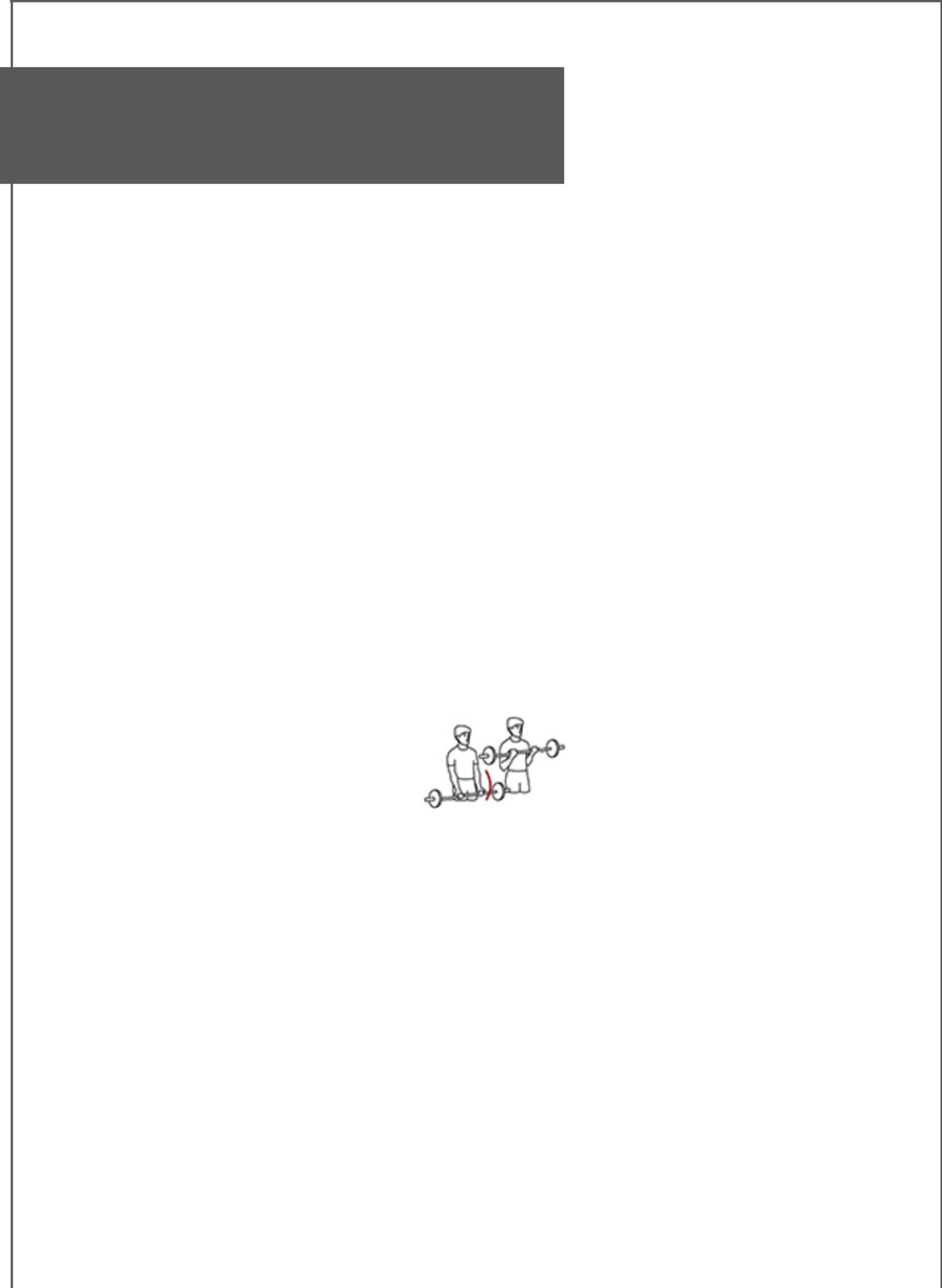
Muscles
Muscle is an organ that has the ability to contract. Thanks to its contractions, the muscle can move the bones and allow movement.
Types of muscle contractions
There are several types of muscle contractions.
 The muscle can contract by shortening, it is a concentric contraction. In contrast, it can contract while lying down, it is an eccentric contraction. These contractions which generate movement are called anisometric or dynamic.
The muscle can contract by shortening, it is a concentric contraction. In contrast, it can contract while lying down, it is an eccentric contraction. These contractions which generate movement are called anisometric or dynamic.
Ex .: Elbow flexion
 As you raise the weight, the biceps contract and shorten. The contraction is concentric.
As you raise the weight, the biceps contract and shorten. The contraction is concentric.
 When lowering the weight, the biceps contract as they lie down. The contraction is eccentric.
When lowering the weight, the biceps contract as they lie down. The contraction is eccentric.
 The muscle can contract without changing length, it is an isometric contraction. This type of contraction does not cause movement. It can also be called static contraction.
The muscle can contract without changing length, it is an isometric contraction. This type of contraction does not cause movement. It can also be called static contraction.
Font size:
Interval:
Bookmark:
Similar books «Myths and realities about musculation»
Look at similar books to Myths and realities about musculation. We have selected literature similar in name and meaning in the hope of providing readers with more options to find new, interesting, not yet read works.
Discussion, reviews of the book Myths and realities about musculation and just readers' own opinions. Leave your comments, write what you think about the work, its meaning or the main characters. Specify what exactly you liked and what you didn't like, and why you think so.

